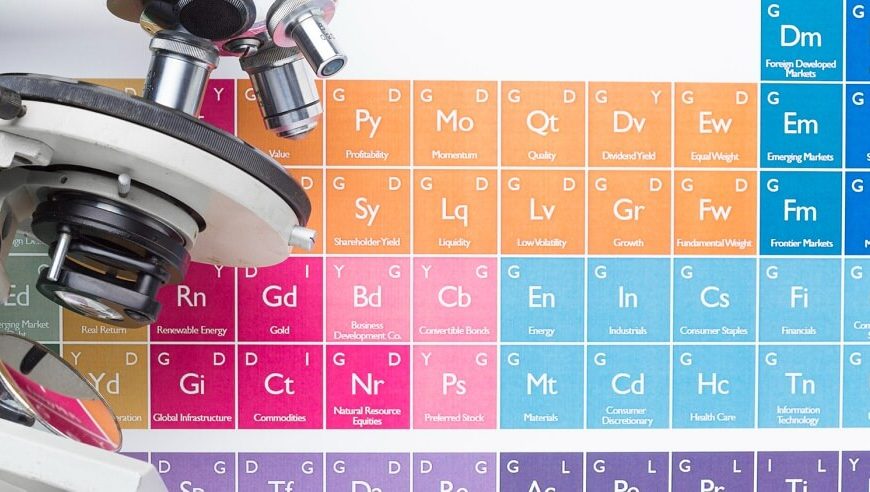‘What is the universe made of?’ It’s the ‘elements’ found in nature that make up the observable universe, human beings included. The periodic table of elements, then, is nothing short of these very elements, put together in a meaningful pattern. In this article you will learn the Periodic Table of Elements with Names. Further, we will take a look at the Modern Periodic Table, and shed light on some cool Periodic Table Tricks!
The Periodic Table: A Closer Examination
What is the Periodic Table, other than a mere ‘arrangement of the elements’? The Periodic Table of Elements, as discussed, is a means of arranging the chemical elements. These elements are, in essence, the building blocks of all observable matter.
Now, each chemical element is bequeathed with its very own atomic number. But how does one arrive at this number? The answer: It comes from the number of protons that are in front of each atom of the element.
The chief purpose of the Periodic Table lies in arranging all the elements in rows and columns. Within the rows, you will find the elements secure their place on account of their atomic number. As far as the elements in the columns are concerned, their arrangement is based on the ‘similar chemical properties’ they possess. This is the reason you will find ‘gases’ in a column, and ‘metals’ in yet another.
The Periodic Table Of Elements: With Names
Beneath you will find a figure showing the Periodic Table of Elements. The elements have been listed here, based on the structure of their atoms.
Note: Not only are the elements arranged based on the number of protons they have(as touched upon earlier), but also on how many electrons are present in their outer shell.
In the table presented below, you will find that the elements are listed from ‘left to right and top to bottom’, in the order of their atomic number.
How to Learn the Periodic Table: Periodic Table Tricks
As you might well have gathered from a brief examination of the table above, learning the Periodic Table is no easy feat!
Needless to say, in all probability you might have the itch to memorize that Periodic Table. If you’re a science buff, it’s certainly one of the cooler things to do.
The following are some tips and tricks that will certainly help you when you are posed with the question, ‘How to Learn the Periodic Table?’
Break it down into sections
Taking things one step at a time, always helps. You could start by memorizing sets of 20 different elements, or even on the basis of their different colour codes. In this way, as you master each group, you will be able to more easily memorize the whole table!
Spread the practice over some days
One of the best ways to work on sharpening long-term memory, is to expose yourself to a Memorization Practice. After all, as they say, Practice makes Perfect!
Making a phrase
Whether you have a way with words or not, you can get yourself to memorize the periodic table more easily, through the creation of some simple, yet catchy, phrases.
Example: Take the first 9 elements.
H – Hydrogen He – Helium Li – Lithium Be – Beryllium B – Boron C – Carbon N – Nitrogen O – Oxygen F – Fluorine
We can make a phrase from them, like: ‘Happy Hemant Likes Beans But Could Not Obtain Food.’
Remembering the Elements with a Song
Our minds are forever forming ‘associations’ with things. A song from a long time ago can unlock some powerful memories. You can use this ability of the human mind to memorize song lyrics, well to your advantage. All you have to do is make up some lyrics to a song about the periodic elements. Then hum it constantly, and everywhere. Like in the bathroom, or when you’re out for a run!
Knowing the ‘Latin’ names
Nearly all the names of the chemical elements in the Periodic Table are in the English Language. The few exceptions are in Latin. Up for learning the full Latin names of elements? Not only will it be a fun exercise, it will aid your memorization of the Periodic Table, too.
Creating a Story
Telling a story is a long lost art. Back in the day, we would all gather around our elders, and prod them to tell us fascinating stories at bedtime. Can’t find someone to tell you a story any longer? No problem! Tell one to yourself, and that too, using the elements of the Periodic Table! For instance, you could have ‘Hydrogen’ as the protagonist in a tale where the evil queen, ‘Beryllium’, is trying to vanquish the world!
Using Flash Cards
Making use of flashcards is a great way to learn the periodic table. Note: One thing you want to do is make a flash card for each element.
Using Coloured Pencils
All kids love using coloured pencils, so this one’s going to be a lot of fun for them. Use different-coloured pencils, to practice writing the elements. That will help children correlate the elements with the different groups they belong to.
Recite the names of elements out loud
Saying things out loud is actually a great way to promote active learning. In today’s world, it’s not unusual for people to be talking to themselves. People might think you’re talking to someone ‘hands-free’, when actually you’re reciting the names of elements of the Periodic Table!
At EuroKids we are all for children learning the Periodic Table of Elements, especially if they are avid Science Buffs. Not only does it give them plenty of information about the Elements, it shows them how they relate to each other, too.
















